Second-Hand First: 8 Ideas for Buying Less (New) Stuff
I think we are all agreed, there is a lot of stuff in the world. Too much stuff, some might say. And if we want to reduce our footprint, it is much better to own less stuff, share more stuff, and avoid buying the shiny new stuff where we can.
But how do we go about that, exactly?
Answer: there are loads of places to look. Let’s start with the obvious ones, and move onto the less-than-obvious ones. Let me know of anything I’ve missed in the comments!
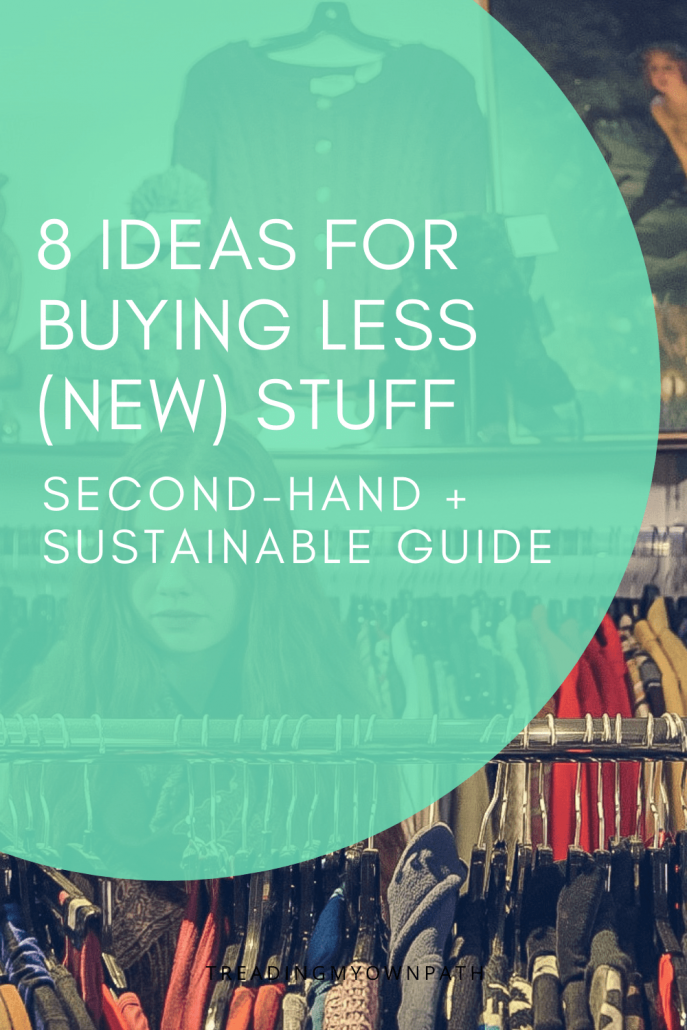
1. The Charity Shop
I’m pretty sure all of us have given stuff to the charity shop in our time. Homewares, clothing, toys, books… we love to donate our old unwanted things to the charity shop.
But you know what is even better than donating stuff to the charity shop? Buying stuff from the charity shop.
It isn’t enough to donate our old stuff to the charity shop, and then go buy our replacement items from the big box or department store. Charity shops only sell about 15% of everything that is donated.
The donations that don’t even fit inside the charity shop far outnumber the things on sale…
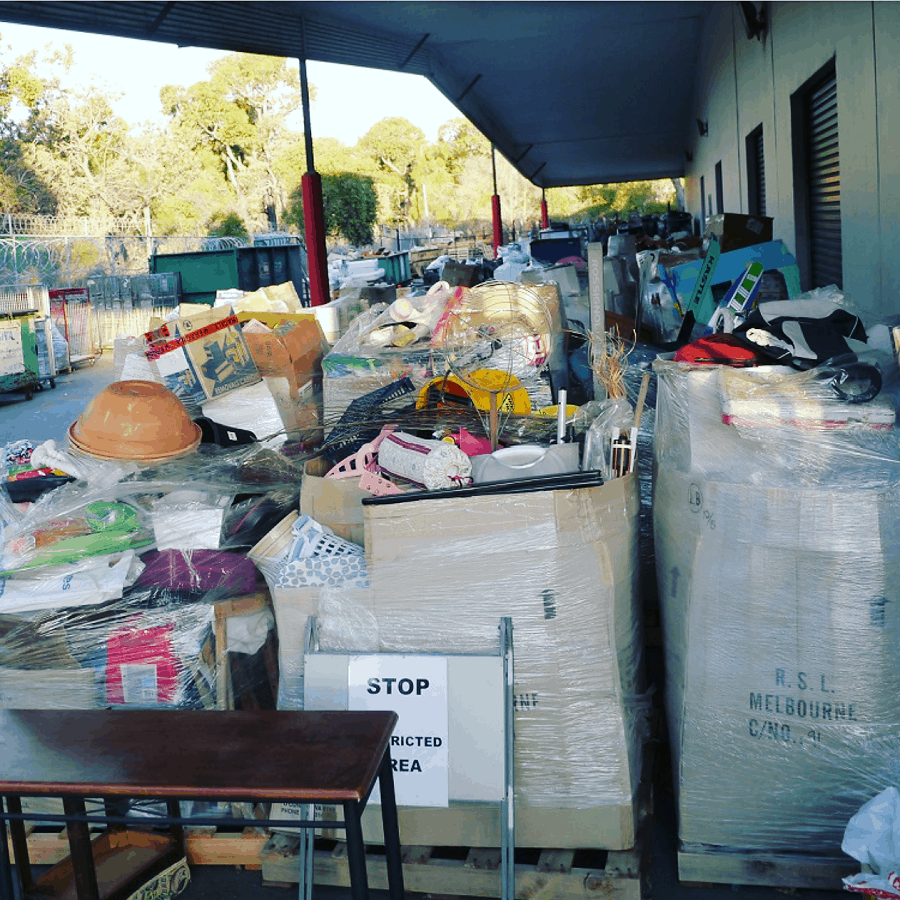
To close the loop, they need us to buy more things from them.
They don’t need us to donate stuff. They need us to buy stuff.
2. Online Classifieds and Auction Sites
Online classifieds such as Gumtree and Craigslist are a great way to find second-hand items locally, (great for fragile, oversized or heavy stuff) and online auction sites such as eBay are a great way to find items further afield (better for lightweight and easy-to-post items).
I’m a big fan of platforms like these (and I talk about the ins and outs a lot more in my book) because of the way they allow sharing of stuff – most often for a price, but sometimes for free.
3. Online Neighbourhood Networks
Online platforms allow us to connect with our neighbours – some with the sole purpose of buying selling, donating and borrowing stuff, and others with more broad community engagement over things like activities, security and pets.
Some platforms have dedicated membership sites (such as Nextdoor and Streetbank), whilst others use Facebook or Google groups (a quick search will reveal your local options).
Even where these platforms are national and international, it doesn’t mean they will be active in your area so have a look and decide if they are something to pursue or not.
4. Buy Nothing Groups
I could wax lyrical about the Buy Nothing Project all day. In fact, I do. The project is a network of Buy Nothing groups, which exist to help us share with our neighbours, and they operate via Facebook. What makes them unique is that members can gift, accept and borrow things, no money (or even trade) allowed.
And it’s only possible to join one: the one where we live.
The things that are given away would surprise you – both for how great the items are, and for how crazy obscure they can be, too. I’ve been gifted a Dell computer monitor, an almost-new pair of shoes and a desk and chair via my local group.

But it’s not all glamour – I’ve also taken a half-eaten jar of chocolate peanut spread and given away a semi-chewed dog toy. Trust me, almost anything goes.
5. Freecycle and Freegle
Similar to the Buy Nothing groups in that items are offered for free, Freecycle (worldwide) and Freegle (UK) are networks of people sharing items. The platforms are less user-friendly than social media or other newer networks, but they do the job.
6. Verge Collections
Verge collections are the stuff of (my) nightmares. Most councils in Perth allow 2 or 3 verge pickups per household per year, and offer this service for free (well, included in council rates). It works like this: residents put all of their unwanted stuff out on the front lawn, a truck comes along and squashes it into little pieces, and off it goes to landfill.
Cue, sobbing from me.
Every time, the streets are laden with stuff. People throw out 5 mattresses at a time, they throw out perfectly good kids toys. They throw out kitchen appliances, furniture, equipment and even cardboard, metal and other recyclables.
Sometimes every house on the street can have a pile like this of mostly usable stuff, ready for landfill.

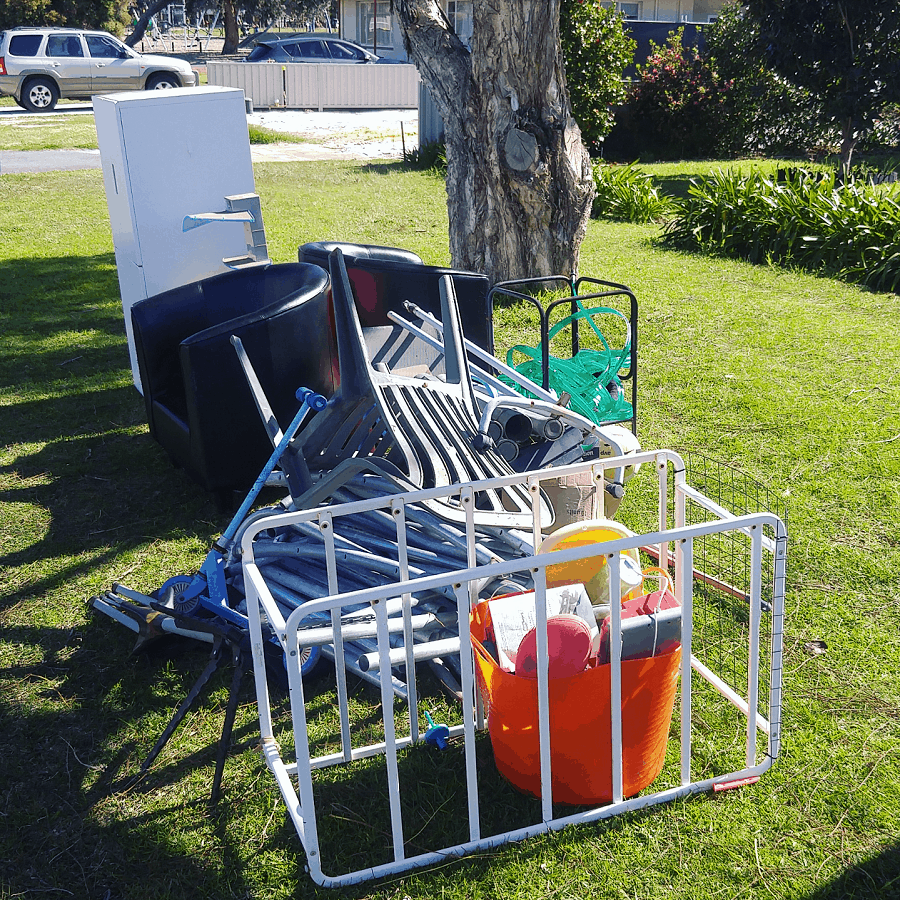
Some people love to rummage through the piles and score great stuff. Keeping an eye on verge collection dates in the more affluent suburbs can mean excellent finds, but every suburb has something to offer. I rarely go on the hunt (it upsets me too much), but I’ve rescued wooden garden chairs, an outside table, a worm farm, storage boxes and heaps of garden pots (including some terracotta ones).
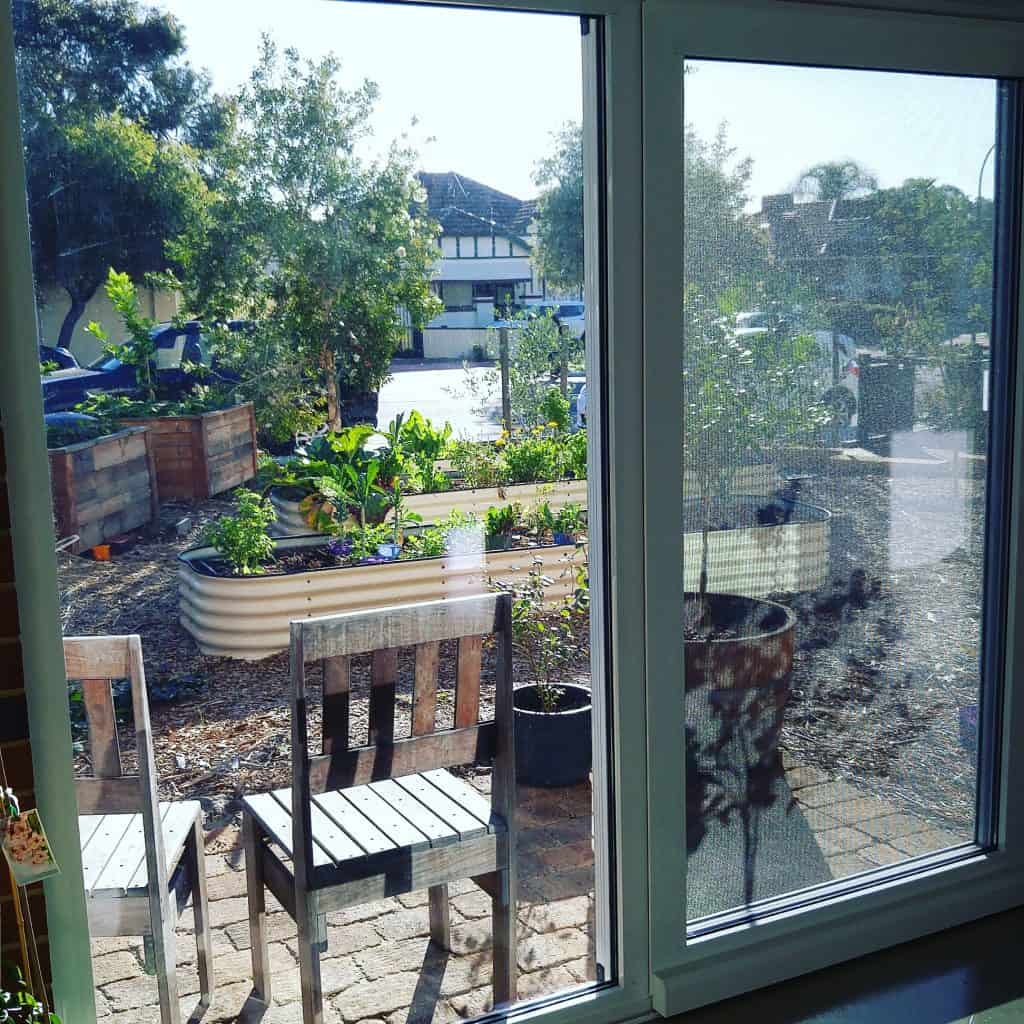
The downside of verge collections is that for all the great stuff rescued, there is plenty of great and still-usable stuff going to landfill.
7. Borrowing Stuff
Borrowing stuff can be formal, such as joining the library. They have so much more than books – they have magazines, CDs and DVDs and board games. If you don’t want these, tool, toy and “things” libraries also exist.
Or borrowing can be informal: from friends, family, colleagues or neighbours. If we don’t know our neighbours, the Buy Nothing groups are a great way to make a borrow request.
This is how I was able to borrow a screwdriver to fix my coffee machine (the seal needed replacing).

We often confuse the need to use something with the need to own it. Maybe we need a gadget for a particular recipe, or a hook in the wall to hang a picture. But we don’t necessarily need the blender or the drill. We just need to use them. So we can borrow them instead.
8. Hiring Stuff
Almost everything is available for hire, but these services aren’t as popular as they should be. We can hire dresses and suits, tools, furniture, glasses and flatware – and yet time and again, we buy it instead. My suspicion is that many people think hiring is a false economy – shelling out money for something with nothing to show at the end of it.
For me, this exactly the reason why hiring stuff is so great. We get to use things, then give them back for someone else to use – and we never have to worry about them again.
Not only do hired items arrive clean and ready to go; the hire company is responsible for maintenance. With glass hire, did you know many hire companies will also do the washing up for you?
We forget that it isn’t just the cost of buying stuff. It’s also the cleaning and the storage and maintenance. Because it’s only twice or three times as expensive to buy the champagne glasses rather than hire them, we buy them. We reason we will use them again. Maybe we will – but maybe not.
Once we own them, we have to clean them, and store them. We might need to buy more storage. This is how we end up with big houses with bigger rooms – to accommodate all this stuff.
There’s plenty of stuff already in the world. There’s plenty of stuff in great or usable condition, just waiting for a new owner to maximise its potential. There is absolutely no requirement to buy everything new.
It may not even be necessary to buy it at all.
Now I’d love to hear from you! Do you have any tips for finding second-hand items, or avoiding buying stuff? What are your favourite groups or networks? Is this something you struggle with, and what would make it easier or more accessible for you? Anything else to add? Please share in the comments below!
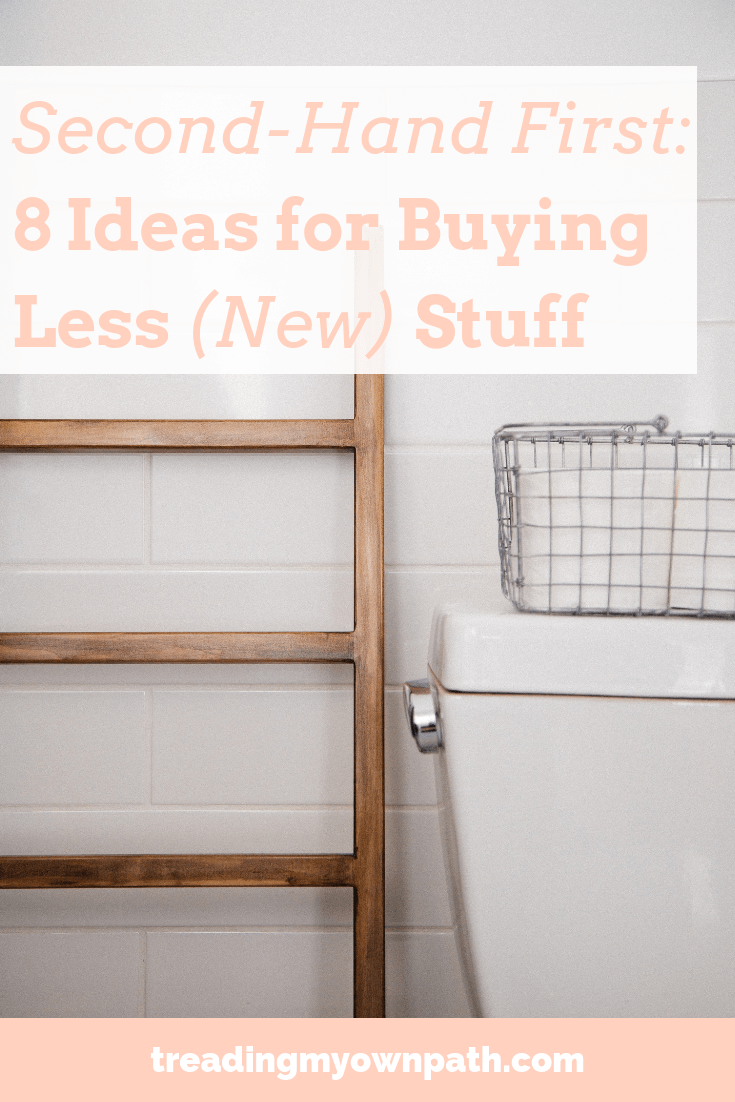
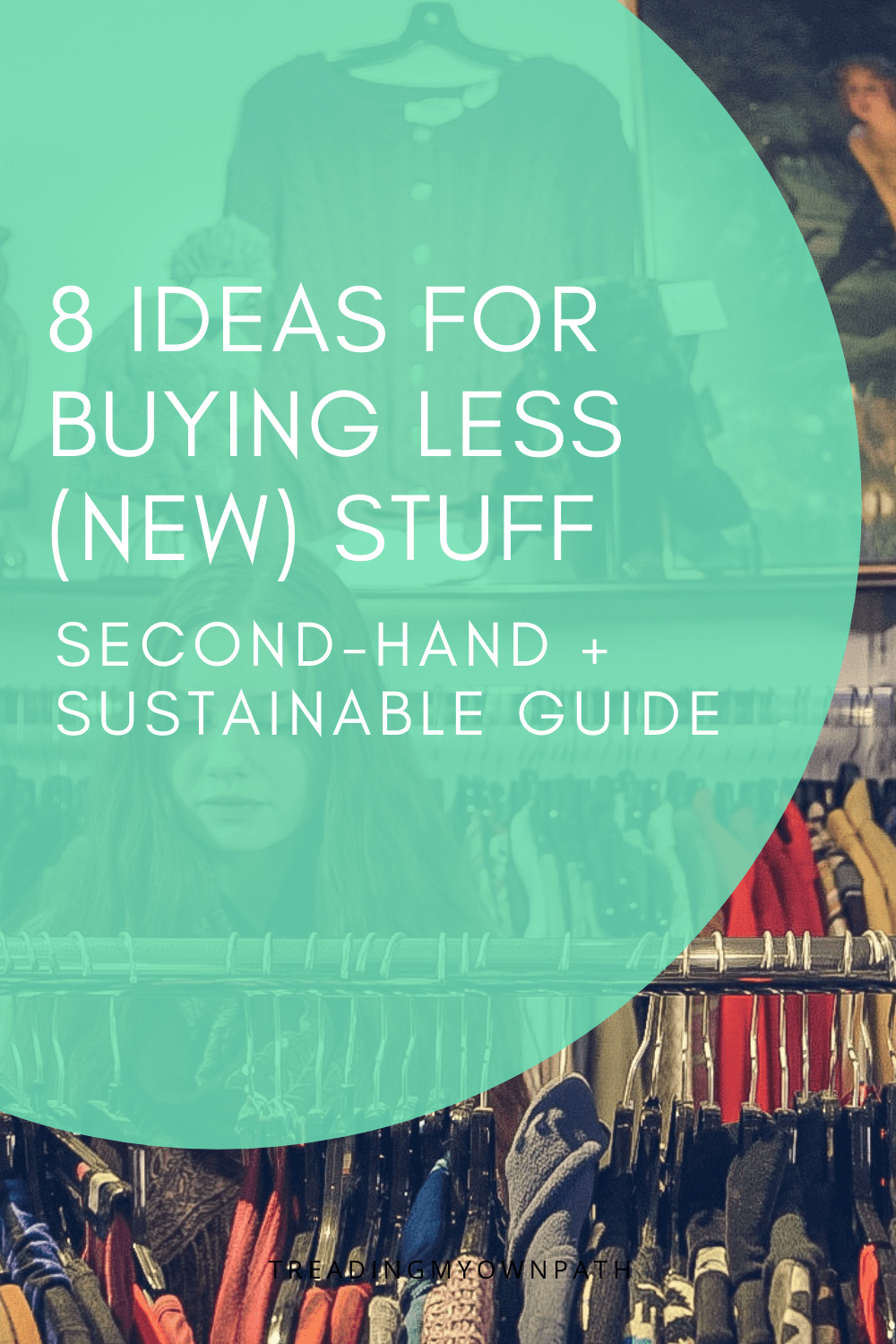
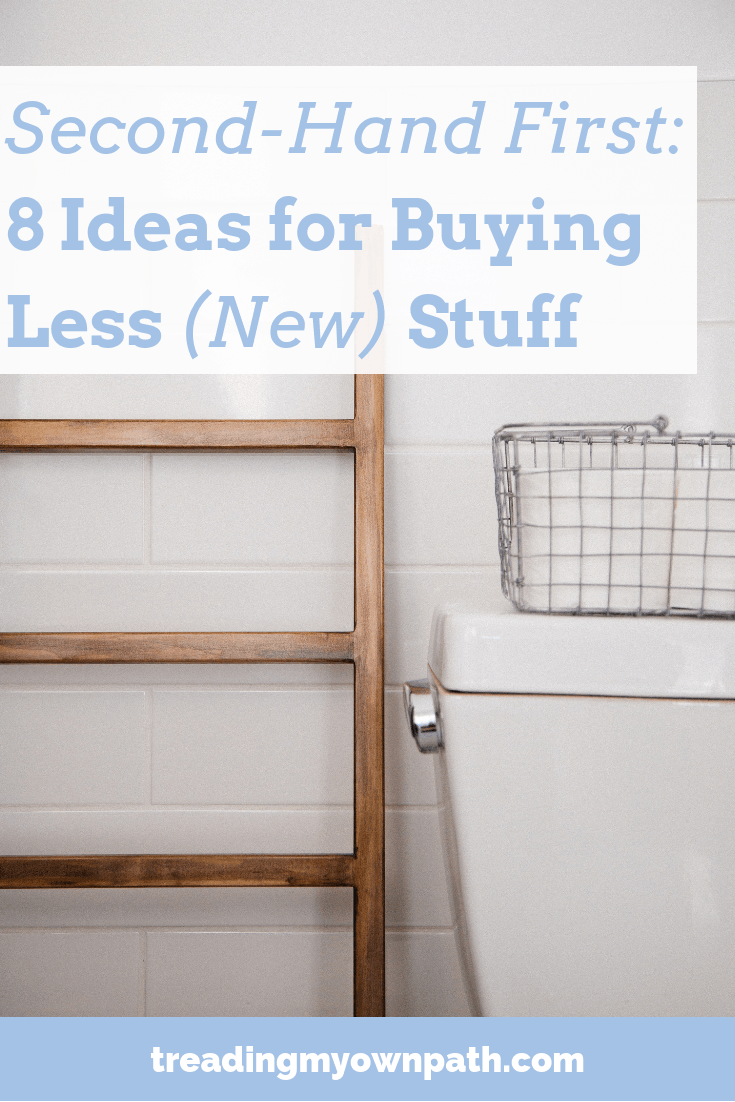







Thanks Lindsay, for a great article! There is way too much stuff in the world.
I love my Buy Nothing group and have given away and obtained lots of items. Some I’ve used and given away again. Second hand stalls at markets, garage sales, trash n treasure markets and freebies pages are all great to pick up items. Clothes swaps are on the rise and are also a terrific idea to move out some tired pieces and pick up someone else’s tired pieces that are new for you!.
Thanks Sylvia! Agreed. The Buy Nothing groups are awesome. I agree that swapping, giving away, clothes swapping etc is all on the rise – hurrah! I think slowly people are realizing that the world has a lot of stuff and perhaps we don’t need to buy everything new!
I almost cried when I read the part about the verge collections. So many people in need of basic items and we send them off to the landfill because it’s easier.
Oh my goodness Sandy, you should see it. It is terrible. I can barely face leaving the house. Judging by the stuff “appearing” on the verge this week, it must be that time again. I’m sure we only just had the last one! Cardboard, metals, useful stuff. All ready to be landfilled. Crazy.
In Cairns there is a “buyback” shop at the materials transfer facility that sells the usable goods that people throw away. We don’t have the hard waste collection like you mentioned is done in Perth (and I know it’s done in Melbourne too). But although Cairns City Council tries to divert all reusable and recyclable items, I’m told that there’s still one dump truck every hour of the day transferring rubbish from Cairns to the superdump landfill on the tablelands. Hopefully as more people become aware of the waste problem, the volume will decrease.
There are some really great ideas here! I’ve never heard about verge collections before–there’s nothing like this where I live. It would be cool if there were a specified day or days of the year when people can put stuff on their front lawn for others to take, but without the part about a truck hauling all the stuff off of to a landfill! In a way I feel like this encourages consumption–if it’s easy to get rid of unwanted stuff, people might think less about whether they really want to take it into their homes in the first place.
Funny you should say this because another reader emailed me to tell me about exactly that! A program where you put your stuff out, people can take it but if no-one takes it you have to haul it back inside again! I wish our system worked like this. Yes you’re right, people take no ownership of their stuff and it makes buying new stuff super easy as someone has hauled away your old couch bed mattress kitchen units etc FOR FREE. Makes me so cross. So cross!
What a great article – always feel re-inspired to use less after reading your articles; thank you.
Thank you Nicola! :)
Love reading your stuff Lindsay! I love hand-me-downs for my kids and myself!
Thank you Andrea!
We call the verge collection the hard rubbish collection when, as you pointed out, most of it is not rubbish at all but perfectly usable or fixable pieces. It makes me so angry, I agree with a comment above that it does seem to encourage consumption as some houses in my street seem to have enormous piles of stuff every single year. Really disheartening.
Hi Jenni, I’ve just come back from walking the dog and it appears (yet again) it is verge collection time. And one o my neighbours had all this clothing strewn across the verge, including 4 pairs of jeans. They looked like they were in good condition. I ummed and ahhed about picking them up – denim fabric is cotton, and so water intensive! But I had a dog and no bag, so I didn’t. How can people be so disrespectful to other people and our planet? I just can’t understand it.
When I first moved out of home my parents furnished my entire house from verge collections in local suburbs. We got a fridge, washing machine, bookshelves etc. It was great! I was able to leave some of it at my last house for the next person who may not be able to afford it.
And I have just joined my Buy Nothing Group and love it! I had too many guppies so gave some away and an old wheelchair that needed a new home as didn’t want it going to the tip. Just this week I received 6 nighties for an upcoming hospital admission. I have met some very lovely people. I do love garage sales too and a great way to meet neighbours.
Oh Melanie, your experience with the Buy Nothing group pretty much sums up how I and everyone else I know have found it! Such a great way to connect. Social media for good. Hurrah!
So glad I read all the way to the end! #8 is what I’m thinking of doing next and it’s great to see this affirmation of the value in reuse. The comment of “nothing to show at the end” is exactly what I want to accomplish for families in my area. Nothing (or as little as possible) to the landfill. THANK YOU for this timely post!
When I have the urge to buy something I take a picture of it , then walk around for awhile. I think about where it would go and how it would look and do I need it. Wanting it isn’t enough. Most times I forget about it. I often find something similar at a used store eg. small crockpot to make soup at work, electric sandwich maker for vegan grilled cheese etc. I’ve fine tuned my ideas and it has really worked for me. My home is simple and easy to clean( 2 dogs and 1 messy husband! Hahah!) Much more time for walks and garden work that pleases me.
Before plunging into this article for reading I really never knew about the battle of Aldie that happened atop our little hill.